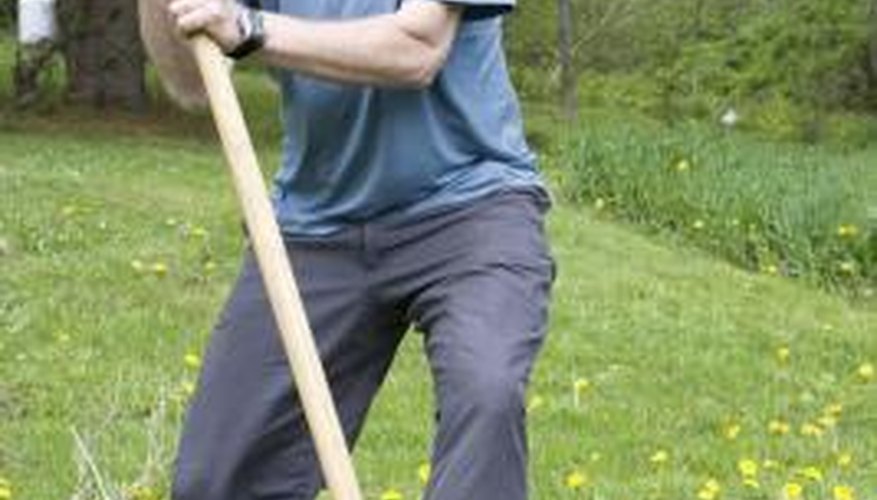Dug wells are the simplest type of wells, and as such can be dug with simple hand tools. Despite being the most primitive form of wells, it actually has quite a few advantages over other forms of wells. A dug well acts as its own reservoir, eliminating the need for a storage tank. The flow rate of water is also much greater due to its larger diameter. Wells lined with brick, stone, sewer pipe or other impervious material should have openings on the section below the water table to allow water to seep in from the aquifer.
Choose an area as far as possible from septic tanks, sewer lines and other potential contaminators. (See reference 1,2) Trees that thrive despite a lack of precipitation indicate an accessible water table in their area, so digging just outside the reach of their canopy will likely give you access to the water table. Ask neighbours with wells about the depth of the water table and the types of soils and rocks you're likely to encounter as you dig if possible. Local extension services and well permit offices should also have this information.
- Dug wells are the simplest type of wells, and as such can be dug with simple hand tools.
- See reference 1,2) Trees that thrive despite a lack of precipitation indicate an accessible water table in their area, so digging just outside the reach of their canopy will likely give you access to the water table.
Dig with a well shovel and a pickaxe, if necessary. Dig an area approximately 5 feet wide and 4 to 5 feet deep. If possible, fill this area with water and let it percolate down. When the soil is lightly damp, this is the ideal time to dig. Hard-baked, dry soil or sopping wet, muddy soils are the hardest to dig.
- Dig with a well shovel and a pickaxe, if necessary.
- When the soil is lightly damp, this is the ideal time to dig.
Dig the well as a family or community project. Digging wells can be dangerous, and should not be attempted alone. Hand-digging is also extremely time-consuming. The longer the hole you are digging is exposed to the elements, the more likely one of the walls will cave before you can drop the culvert or sewage pipe in to stabilise the walls.
Construct or place a tripod over the well once you've dug too deep to throw shovel-loads of dirt over the edge of the well hole. Attach a sturdy rope and crank at the top of the tripod. Attach a metal clip to the end of the rope, and attach one bucket to the metal clip. Fill the bucket with dirt as it is dug from the bottom of the well. Have one person crank one bucket to the top to empty while another person fills the next bucket with shovel-fulls of dirt.
Dig with wide, scoop-style shovels once you've hit the water table and the soil is muddy. Once you've dug your well as deep as your household needs and local well-digging permits allow, line the bottom of the well with river rock. Cover this layer with pea gravel. Install a culvert or sewage pipe depending on the type of shoring you have decided to use to secure the sides of your well. Back-fill around the outside of the shoring with stones and river rock to allow water to percolate into the well until you are a at least two feet above the water table. (See reference 2)
- Construct or place a tripod over the well once you've dug too deep to throw shovel-loads of dirt over the edge of the well hole.
- Once you've dug your well as deep as your household needs and local well-digging permits allow, line the bottom of the well with river rock.
TIP
When you dig away the topsoil, reserve it for garden or farming areas that need the microbial life that the topsoil layer is filled with. Using this soil as backfill for the outside of the well will contaminate drinking water with microbes.
